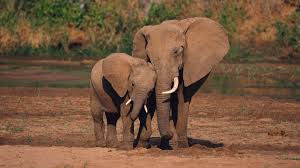Ten Things I Bet You Didn't Know Animals Did
- tigercatmariah
- Apr 26, 2016
- 4 min read
1. Prairie Dog's Use Language
Scientist Con Slobodchikoff conducted a series of experiments where he discovered that Prairie Dogs use "words" when communicating with one another. By walking various predators by marked individual Prairie Dogs, he discovered that they use distinct chirps/ alarm calls that are significantly different from one another to distinguish between the different kinds of predators. Slobdchikoff didn't just stop there though, he had numerous humans of different shapes and sizes, wearing different colours, and carrying different objects walk by the Prairie Dogs. In a CBC interview Slobodchikoff described his findings, "They're able to describe the colour of clothes the humans are wearing, they're able to describe the size and shape of humans, even, amazingly, whether a human once appeared with a gun."
2. Pigeons Can Detect Cancer
In a study done by Richard Levenson, Pigeons were shown various x-rays/ microscope slides of cancerous and non-cancerous breast tissues. They were asked to either push a blue or yellow button dictating whether they believe that there was cancer present or not. If they were correct they were rewarded and if they were incorrect they were not. The Pigeons were able to identify cancer with 99% accuracy and showed the ability to generalize to new slides/ x-rays they had never seen before.
3. Bonobos Can Learn Human Language
Kanzi the male Bonobo watched Sue Savage- Rumbaugh attempt to teach his mother how to use a lexigram. Through indirect observation, Kanzi was able to successfully learn 340 symbols. He uses the lexigram and the symbols to communicate with other apes as well as with humans. He now knows 3000 spoken human words.
4. Imperial Blue Butterfly Larvae and Tyrant Ants Communicate With Each Other

The two species of insects have formed a mutual relationship where it benefits both to be around each other. The larvae of the Blue Imperial Butterfly produces a sweet secretion that is beneficial for the ants when they eat it, in return the ants defend the larvae from predators like spiders. In order for the Tyrant ants and the Blue Imperial Butterfly Larvae to find each other, they have developed specialized communication systems whereby the larvae emits vibrations and sounds that the ants can hear and respond to in order to locate the larvae!
5. Crows Read Traffic Lights
Crows have been observed watching traffic lights. When the light turns red, the crows take nuts that are hard to crack down to the road and place them in front of the cars. They watch for the light to turn green before they fly away and wait for the cars to crack their nut. Once they see that the light has again turned red, they return to either eat their nut or adjust the placement if it hadn't been cracked the first time around.
6. Dolphins Can Tell you When You Are Pregnant

Dolphins have shown the ability to detect when humans are pregnant. They have been observed to hone in on women who are pregnant and make buzzing sounds around them. It is believed that by using echolocation, dolphins are actually able to see human fetuses!
7. Orangutans Can Use iPads
Zoos around the world are beginning to bring in iPads as a new form of enrichment for the Orangutans. The apes love the new gadgets and have their own personal preferences on which apps they like to use. The apps that the apes use range from musical instruments and brain challenges all the way to drawing!
8. Lyrebird Can Imitate Almost Any Sound
The amazing Lyrebird has arguably the most elaborate mating call of any bird. It can imitate just about any sound it hears. The more sounds it is able to mimic, the more attractive it becomes to potential mates. The Lyrebird has been observed imitating other animals such as the Koala as well as human sounds like construction zones, speech, camera shutters and many more!
9. Octopi are Expert Problem Solvers
Not many would think an animal like the Octopus could solve problems as well as it can. Not only has this animal been able to complete intricate mazes in very fast time periods, but they have also learned how to open jars to receive food rewards!
10. Elephants May be Able to Communicate or Sense Danger from very far distances

In the book When Elephants Weep: The Emotional Lives of Animals by Jeffrey Moussaieff Masson, he wrote about the effects on a group of elephants of a distant elephant cull on another group of elephants. One area of land was protected and the elephants here could not be affected by the cull. Miles away though, many elephants were being hunted and killed in the non-protected areas. The elephants in the protected area were somehow able to sense that something was wrong with the elephants in the distant non- protected area. They responded by running to the furthest possible boundary in the protected area away from where the cull was occurring.


Comments